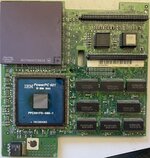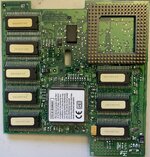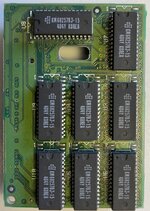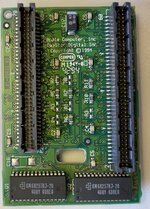This started life as a Japanese LC475 (no different to any other 475, but it's from Japan and therefore, cooler than yours). It actually came already with a 32MB SIMM in it and 2 x 512kb VRAM SIMM's, but no hard disk. So i stuck a SCSI2SD in it and got System 7.5.3 installed on it.
Then, the Apple PPC Upgrade card arrived in the mail.. 4 Months after I won the auction for it!
It initially looked damaged in transit, so i got a few (90), PPC601 chips to repair it, only for it to actually work just fine. It even has the optional 256kb L2 Cache module installed. And of course, I put in a full fat 68040 and heatsink for good measure.
The only issue is the 25MHz bus means the PPC Upgrade card runs at just 50MHz, which is far too slow. The CPU on the card, is actually rated for 75MHz or 100MHz respectively. So i did the 33MHz bus overclock for the 475 and lo-and behold, the PPC accelerator was just fine with that, bumping up to 66MHz.
Still have no idea what to really do with it other than load up SimCity 2000 on it




